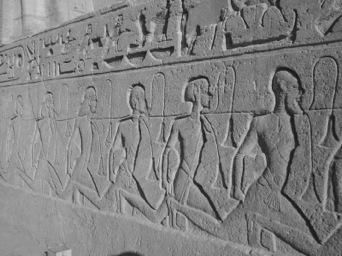Newsletter July 2012
General Wellbeing - Massage, the history and (a little bit of) theory behind it.
This month, I'll be looking at the history and some theories on how massage works as a therapy. As a treatment method, massage is recorded as far back as 2000 BC and was a part of many ancient cultures, Egyptians being one such example. Over time, in Western society at least, it became a less popular treatment method within a scientific context, as modern medicine came of age. Today, however, it is one of the leading growth industries in complementary medicine and it is estimated that in the United States between $4 - $6 billion a year is spent on Massage Therapy alone.
This leads us to the question, so why is it so popular and how does massage work?
There has been little clinical testing on general massage techniques, yet there are at least 5 recognised theories on how it may work. These are as follows:
Gate control theory of pain reduction (Melzack and Wall 1965) - Competing sensations (such as pressure) disrupt the sensation of pain and 'close the gate' on feeling it.

Promotion of parasympathetic activity - This theory echoes my own thoughts mentioned in the May 2012 newsletter. i.e. forms of 'stress' cause a sympathetic nervous response, and massage then encourages the nervous system to 'relax' and put the body into a 'restful' state.
Influence on body chemistry - Two studies have linked massage with increased levels of serotonin (Field, Grizzle, Scafidi, & Schanberg, 1996; Ironson et al., 1996). Serotonin is believed to act as a pain regulator and it has since been found to be deficient in suffers of fibromyalgia; a condition where the person suffers from intense pain and sensitivity around the body.
Mechanical effects - Manipulation and stretching of the soft tissues prevents adhesions from forming under the skin and breaking down any fibrous build ups. Massage is also believed to help the blood circulation and removal of lymph.
Promotion of restorative sleep - It is believed that massage can help promote a deeper, less disturbed sleep helping the body to regenerate.
There is also a sixth and final aspect to the theory on massage treatments, which is often overlooked. It again echoes what I discussed in the May 2012 newsletter, in that personal interaction and attention given to the client play a part in the healing process. From my own experience as a therapist, part of the appeal to clients is the fact that my treatment sessions take at least an hour and during that time it gives both the client and therapist a chance to discuss whatever comes to mind during that time. This could be as simple as the weather, or more involved such as memories of long forgotten injuries. In some cases, a proper counselling session may be beneficial.
From my own experience of receiving massage, I spent 3 years as a client before training as Sports & Remedial Massage therapist myself, I can identify with all these theories on massage. However, what is just as important is that regardless of 'how' it may work the fact that it 'does' work as a treatment therapy for you as a person.
The majority of the theoretical information I used as a basis for this newsletter is taken from a very interesting meta-analysis on massage therapy produced by Christopher A. Moyer, James Rounds, and James W. Hannum at the University of Illinois at Urbana–Champaign.
A full version can be found here:
advanced-trainings.com/articles/moyer2004.pdf
